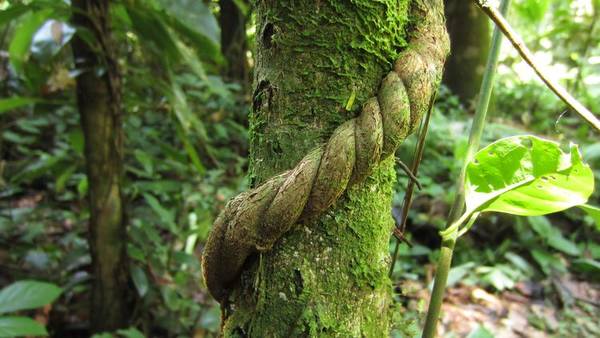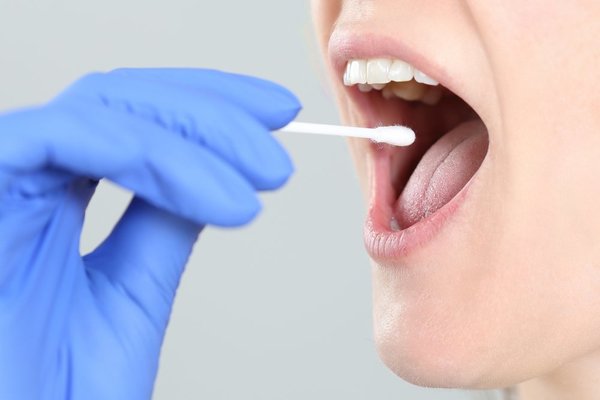How beautiful it is to know that some plants can heal your pain, can bring back your depression-free life, can help you focus on your essential tasks, and can be a life-saver for you! Yes, there exist some plants that can be your best friends, just like a pain killer helps you out with pain, just like a cup of coffee will help you with your stress. Similarly, some plants can help you with numerous problems and aid you in the best ways.
Banisteriopsis Caapi, Yes! The name sounds a bit of out of sight, but if you don’t know about this plant yet, then you are surely missing one of the best things around. If we talk about those exceptional plants that provide us with numerous benefits, you will see Banisteriopsis Caapi standing in the front row amongst them.
This editorial will provide you an insight into this not-so-ordinary plant that can do wonders! So what are you waiting for? Let’s go straight into it!
What is Banisteriopsis Caapi?
Banisteriopsis Caapi belongs to the Malpighiaceae family. It is a vine exclusively used in making ayahuasca, along with the leaves of the Psychotria Viridis plant. Ayahuasca is a hallucinogenic brew, famous in South America. It is known as “the vine of the soul,” which means the spirit is free from all the impurities.
Ayahuasca is a decoction known as a “plant teacher” among the natives of the Amazon rain forest. Over time, it has become prominent in other parts of the world as well. It is especially so among those who want to seek help with opening their minds, getting rid of past traumas, or maybe just experiencing the journey of ayahuasca.
The Appearance of Banisteriopsis Caapi
It grows adjacent to the tree and tries to reach the sunlight. The flowers are pink and white, but they do not usually bloom in the tropics. This vine also grows fruit that is 3-winged and looks like maple. Mostly, it appears in the mid of March and August. The unique thing about this vine is that it grows in a helix pattern that is twisted, and thickly grown.
When you cut this vine, the wood’s pattern or cross-sections look like a human brain or some flower, and the wood is exclusively utilized in making jewelry.
How can you grow Banisteriopsis Caapi?
The good news is that you can grow this vine from both seeds and cuttings. You can buy the cuttings from different vendors online and simply root the cutting in the soil. It will grow into a complete plant with time.
On the other hand, growing it from the seeds will be a more satisfying procedure for the growers because they will produce it from its earliest stage. If you are planning to germinate Banisteriopsis Caapi from seeds, you will have to order them online.
The plant takes time to grow, so you have to be patient while you introduce it in your garden. The germination process is a quick one, and the growers get a nice shot of motivation. Germination and sprouting take place between the 2nd and 4th weeks after sowing the seeds.
Once you get your hands on the seeds, you have to formulate a mixture of soil that will be rich in nutrients. This mixture will help the plant in its early stages of development. The land should be well-draining, and you have to add 25% of perlite in the soil.
As we know that this vine is native to the Amazon rain forest, so the soil must be similar in its characteristics to the one found in its natural environment. You have to avoid starter mixes that are rich in peat, instead go for nutritionally rich combinations.
People living in tropical regions can grow it outdoors, but those living somewhere else would have to maintain high humidity and temperature of 17-30 degrees Celsius. Greenhouse or grow tents would be a great option here, but if you are using a pot, then cover it with a plastic sheet to attain the right humidity level.
Meanwhile, you would have to remove it periodically to ensure that the air is going in. You have to water it once daily. This vigorous creeper can sparkle your old railing with its pink and white flowers.
That was all about the planting. Now let’s get into its chemical profile, uses, and health effects!
Chemical profile of Banisteriopsis Caapi
Banisteriopsis caapi consists of chemicals known as MAOI (Mono Amine Oxidase Inhibitors). They tend to inhibit the flow of the enzyme monoamine oxidase in the brain. MAOI supposed to break down norepinephrine, dopamine, and serotonin; they are also known as happy hormones.
When these chemicals become more concentrated in the brain, the individual stays in a blissful and calming state. The MAOI inhibitors present in Banisteriopsis Caapi help with the hallucinogenic effect of the before mentioned Psychotria Virdis plant. These MAOI inhibitors are present in the stem, bark, and trunk of this brew. The leaves and stems of Banisteriopsis Caapi contain alkaloids like harmine, harmaline, and tetrahydroharmaline.
Shamans traditionally use Banisteriopsis Caapi, secular to ancestral cultures of the Amazon rain forest. They provide locals and others with spiritual and physical healing by using medicinal plants.
Health Benefits of Banisteriopsis Cappi
There are numerous health benefits associated with Banisteriopsis Caapi. Choose among these options for what purpose you would like to have it!
Mindfulness
Are you struggling with a lot of pressure and need to be mindful to focus on your tasks and errands that you have to run? Do not worry at all! Research suggests that Banisteriopsis Caapi (ayahuasca) can help increase the brain’s mindful capacity, thereby supporting our psychological well-being.
Mood and emotions
Give a try to Banisteriopsis Caapi, if you have been dealing with a negative state of mind or lousy mood lately. It can provide you a great relief. According to research, Banistriopsis caapi has a positive effect on mood and emotional regulation.
Addiction
There can be nothing worse than being addicted to a harmful substance, such as nicotine, tobacco, alcohol, and cocaine. Once you have established tolerance against it, it is very uncertain that you can ever get recovered to your non-addicted state. Some pieces of evidence prove that Banisteriopsis Caapi can help with substance withdrawal. You must give it a try if you want to get rid of the addiction that can be or is becoming dangerous for you each passing day.
Anxiety
The effect of Banisteriopsis Caapi on anxiety is not an ordinary one! The chemical profile of this herb helps with eliminating the anxiety associated with anything. A review comprising of six-studies among Banisteriopsis Caapi suggests that it has a positive effect on the construct of anxiety.
Treatment-resistant depression
If you are already on anti-depressant medications for your depression, and the results are not promising, then your depression is more likely treatment-resistant. Don’t worry! Some researchers suggest that Banisteriopsis Caapi helps to deal with treatment-resistant depression. In the study, there was a marked difference in the depression between the placebo group and the control group.
PTSD
If you have been to a traumatic event and the site of it haunts you every time you think about it, you might be dealing with PTSD (Post Traumatic Stress Disorder). The research proposes that Banisteriopsis Caapi might help the victims of PTSD.
Parkinson’s disease
If you are a diagnosed patient of Parkinson’s disease or have some minor symptoms associated with it, there are some solid chances that Banisteriopsis Caapi can elevate your dopamine levels that are low in Parkinson’s disease. It’s a natural way of dealing with this psychological disorder. The research suggests that patients of Parkinson’s disease felt markedly different after being introduced to Banisteriopsis Caapi.
Side-effects of Banisteriopsis Caapi
There are some side-effects associated with Banisteriopsis Caapi, and you should be well aware of them. Have a look at the side effects listed below:
- Vomiting
- Panic
- Paranoia
- Diarrhea
- Increased blood pressure
Drug interactions of Banisteriopsis Caapi
Some drugs can interact with Banisteriopsis Caapi, and the interaction can be deadly and life-threatening. Therefore, never plan to consume Banisteriopsis Caapi without consulting your doctor or therapist.
Avoid taking Banisteriopsis Caapi if you are using these drugs:
- Anti-depressants
- Anti-anxiety medicines
- Weight loss medicines
- Drugs for Parkinson’s disease
- Cough medicines
- Drugs for Schizophrenia
- Drugs for blood pressure
Final Words
Banisteriopsis Caapi is a powerful hallucinogen associated with both positive and negative effects. Future researches will determine whether it can be safely used as an alternative to treat certain health conditions. Never forget to discuss with your health care provider if you are planning to consume Banisteriopsis Caapi because safety comes first!
I hope this editorial was helpful for you and answered all your queries!
















